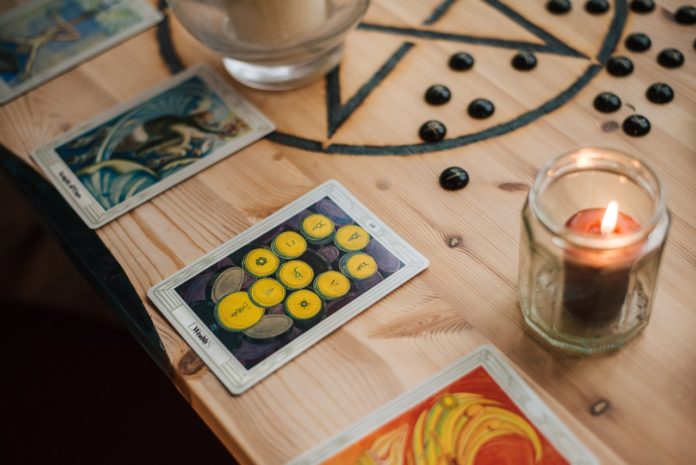Tarot card reading is a captivating subject, rich with insightful symbolism and deep wisdom. It is far more than a method for predicting the future – a powerful tool for introspection, self-understanding, and personal growth.
In this article, we’ve compiled some fascinating facts about tarot card reading that may surprise you and deepen your appreciation of this ancient practice.
The Evolution of Tarot
Tarot’s history stretches back to the mid-15th century in Europe, where it initially served as a card game, ‘tarocchi,’ enjoyed by the nobility. The esoteric connections to divination and the occult only surfaced around the late 18th century.
Influences from many sources, including religious symbolism, pagan mythology, astrological elements, and alchemical principles, mark the evolution of tarot.
Plus, the Rider-Waite-Smith, Thoth, and Marseille are popular tarot cards. They carry these influences, which present tarot as a rich tapestry of human culture and spiritual expression.
Interesting Facts About Tarot Card Reading
Now we know about the evolution of tarot cards, let’s take a look at some interesting facts about tarot cards:
- Tarot Reading is Not Fortune Telling
The second fact about tarot—it’s not fortune-telling. Contrary to the widespread perception, tarot doesn’t predict the future. Instead, it offers insights into your present circumstances, helps identify potential challenges, and reveals possible outcomes based on current actions.
Each card drawn in a tarot reading symbolizes a different aspect of life—emotions, experiences, thoughts, or events. These cards can highlight subconscious feelings, offer alternate perspectives, and suggest actions to achieve personal or professional goals. This process of reflection facilitates personal growth and enhanced self-awareness.
- Tarot Cards Are Full of Symbolism
The artistry and symbolism within tarot decks are multilayered and packed with meaning. Each card has symbols and detailed imagery, enabling nuanced and varied interpretations. These symbols draw from a wide range of sources, including mythology, astrology, numerology, cultural and historical references, and more.
For instance, the element of water in the tarot often symbolizes emotions, while a sword may represent thoughts or conflicts. The number ‘3’ in tarot, as seen in the Three of Cups, might denote growth and creativity. These symbols form a coded language that tarot readers interpret to understand and communicate the profound messages of each card.
- Tarot and Synchronicity
If you’re wondering how shuffled cards can accurately reflect an individual’s life situation, the concept of ‘synchronicity’ offers a fascinating explanation. The term is coined by psychologist Carl Jung. It refers to meaningful coincidences that are not causally related yet seem to have a significant connection.
Synchronicity plays a pivotal role in tarot reading. The cards drawn are not random—they’re believed to be synchronically aligned with your current thoughts, emotions, and life situation. This perspective further emphasizes the potential of tarot as a profound tool for personal exploration and understanding.
- Reversed Cards in Tarot Reading
An exciting aspect of tarot reading involves ‘reversed cards’, or cards that appear upside-down in a reading. These reversed cards can indicate many meanings, including blocked or repressed energy, challenges, or a reversal of the card’s upright meaning.
However, reversed cards aren’t necessarily negative. For instance, The Tower card, often associated with upheaval when upright, might suggest resistance to necessary change when reversed. Each reversed card carries its own unique message, contributing to the richness and complexity of the reading.
- Tarot Reading Ethics
As tarot reading can delve into personal and sometimes sensitive areas, it is crucial that the practice is governed by a strong ethical code. Professional tarot readers usually operate under a defined set of ethical guidelines to ensure respectful and responsible readings.
Typically, key ethical principles include maintaining client confidentiality, approaching sensitive topics with care, respecting the client’s autonomy and free will, and not claiming to predict definitive outcomes, mainly related to health or life expectancy.
Moreover, tarot reading should never encourage dependency and should always promote empowerment, personal growth, and a better understanding of oneself and one’s circumstances.
Bonus Info: The Significance of Tarot Spreads
Tarot readings also rely on specific arrangements of cards called ‘spreads’. These spreads are significant as they assign specific meanings to the positions of the cards, adding context and depth to the overall reading.
Tarot spreads range from simple one-card spreads that are ideal for daily reflection to more complex arrangements like the Celtic Cross spread, which provides a detailed analysis of your life situation. Each spread serves different purposes and offers varying levels of insight.
Conclusion
Tarot card reading is a fascinating practice steeped in history, layered with symbolic meaning, and guided by principles of respect and integrity. It’s a journey of self-discovery and personal growth that goes beyond mere fortune-telling. So, understanding these facts of tarot can deepen your appreciation of this age-old practice. Overall, it is a unique pathway to understanding life’s complexities and our place within them.


